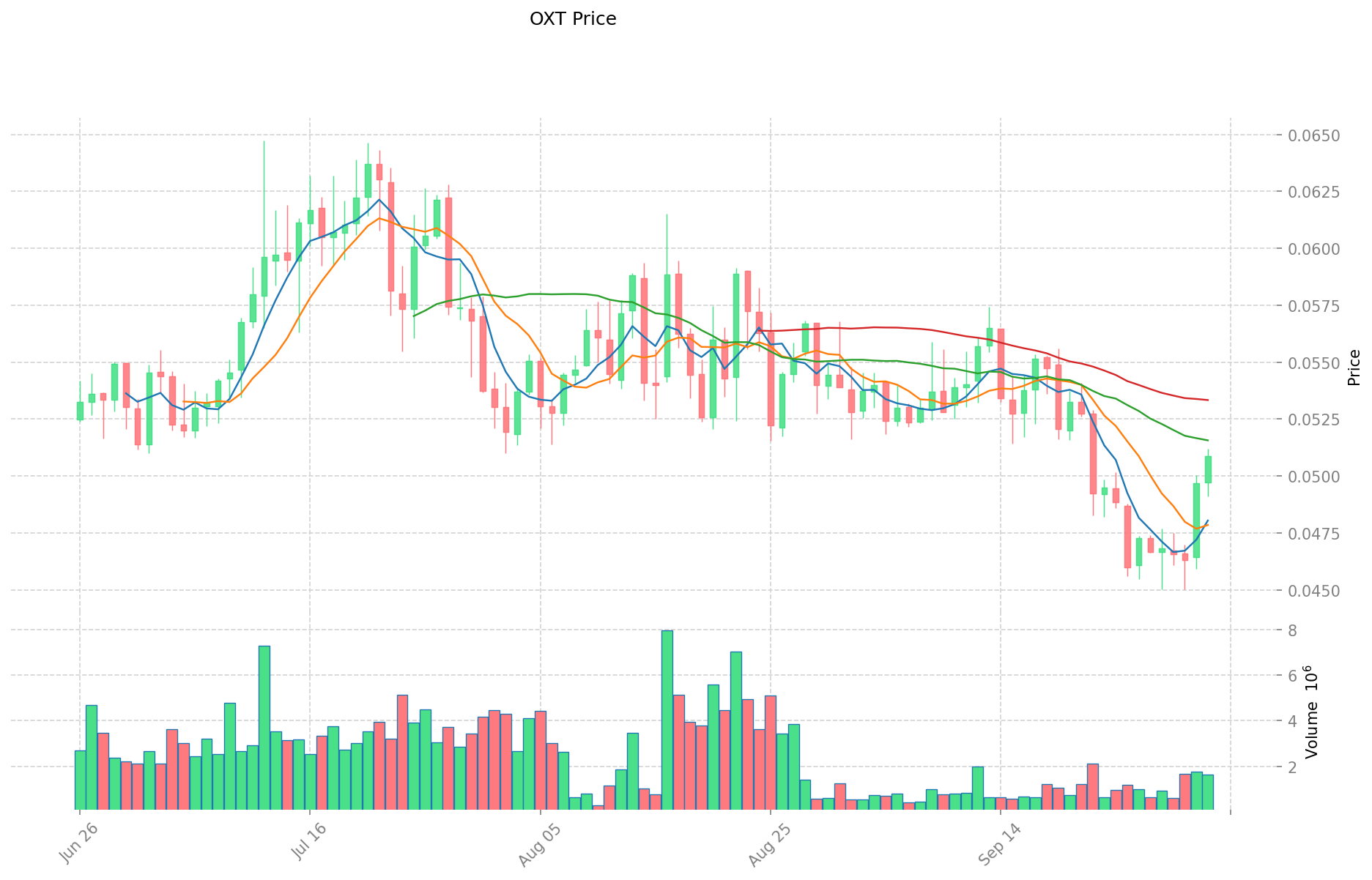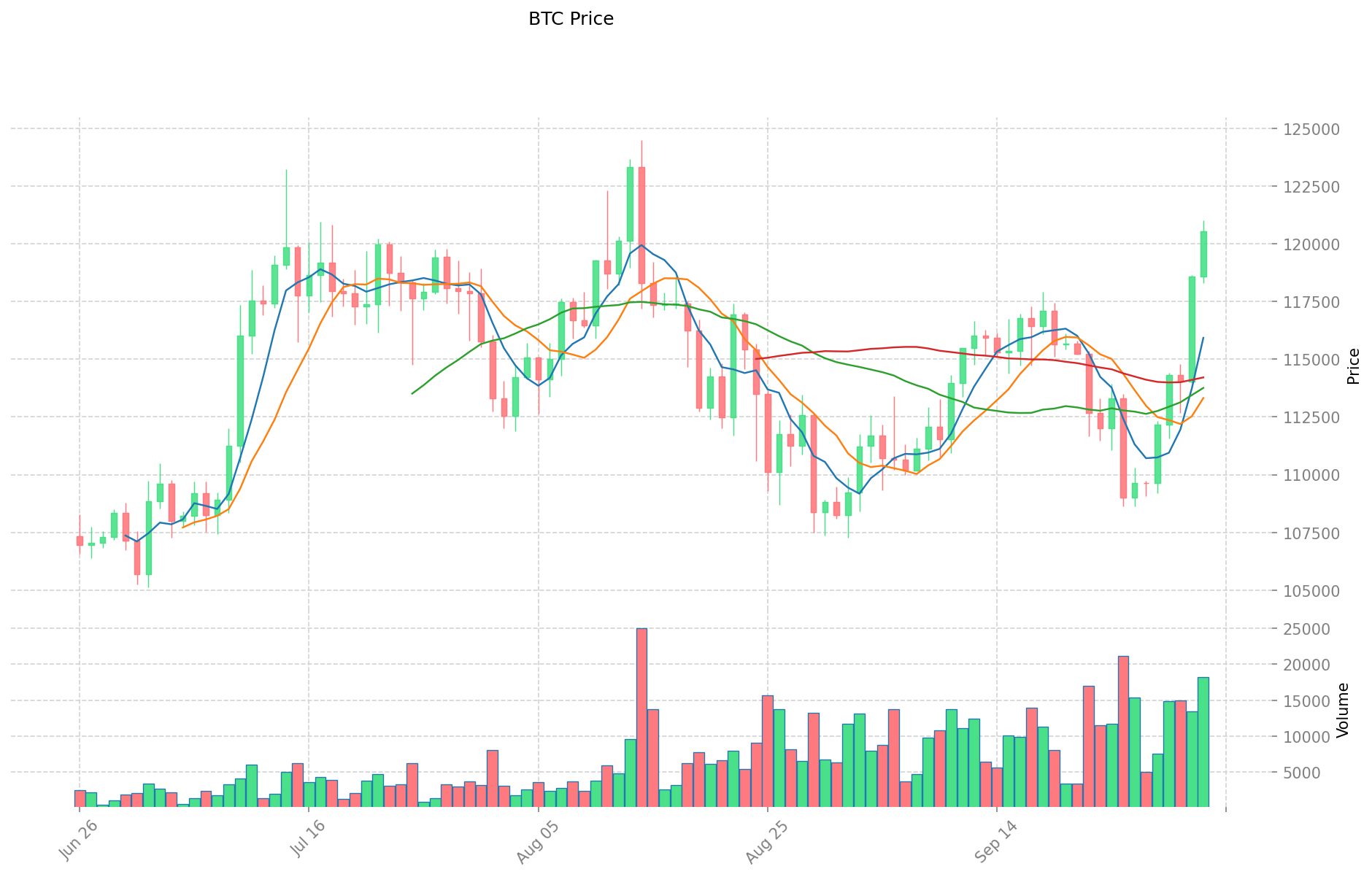OXT vs BTC: A Comparative Analysis of Orchid Protocol and Bitcoin as Digital Assets
Introduction: OXT vs BTC Investment Comparison
In the cryptocurrency market, the comparison between Orchid (OXT) and Bitcoin (BTC) has always been a topic that investors can't avoid. The two not only have significant differences in market cap ranking, application scenarios, and price performance, but also represent different cryptocurrency asset positioning.
Orchid (OXT): Since its launch in 2019, it has gained market recognition for its positioning as a decentralized VPN and privacy tool.
Bitcoin (BTC): Since its inception in 2009, it has been hailed as "digital gold" and is one of the cryptocurrencies with the highest global trading volume and market capitalization.
This article will comprehensively analyze the investment value comparison between OXT and BTC, focusing on historical price trends, supply mechanisms, institutional adoption, technological ecosystems, and future predictions, and attempt to answer the question that investors are most concerned about:
"Which is the better buy right now?" Here is the report in English based on the provided template and context:
I. Price History Comparison and Current Market Status
OXT and BTC Historical Price Trends
- 2021: OXT reached its all-time high of $1.026 in April due to increased interest in privacy-focused cryptocurrencies.
- 2025: BTC hit a new all-time high of $124,128 in August, likely driven by institutional adoption and mainstream acceptance.
- Comparative analysis: During the recent market cycle, OXT declined from its peak of $1.026 to a low of $0.04502, while BTC demonstrated greater resilience, rising to new heights.
Current Market Situation (2025-10-03)
- OXT current price: $0.05051
- BTC current price: $120,367.1
- 24-hour trading volume: $71,732 (OXT) vs $2,036,206,855 (BTC)
- Market Sentiment Index (Fear & Greed Index): 64 (Greed)
Click to view real-time prices:
- Check OXT current price Market Price
- Check BTC current price Market Price


Comparative Analysis of Investment Value: OXT vs BTC
I. Investment Value Fundamentals
OXT Investment Value Core Factors
- Network Growth: OXT's value primarily depends on Orchid network expansion and node count increase
- Service Stability: Technical improvements enhancing the reliability of decentralized VPN services
- User Adoption: Growth in both individual and enterprise users utilizing the privacy protection services
- Market Demand: Increasing need for decentralized VPN and privacy protection services globally
BTC Investment Value Core Factors
- Market Sentiment: Investor perception and confidence in Bitcoin as a store of value
- Regulatory Environment: Changes in governmental policies and legal frameworks affecting adoption
- Macroeconomic Trends: Inflation rates, global economic stability, and monetary policy impacts
- Technological Innovation: Layer-2 solutions and network improvements affecting scalability
II. Core Factors Affecting OXT vs BTC Investment Value
Supply Mechanism Comparison (Tokenomics)
- OXT: Limited supply mechanism with value tied to network utility and service adoption
- BTC: Fixed maximum supply of 21 million with deflationary halving events every four years
- 📌 Historical Pattern: BTC's halving events historically create cyclical price movements, while OXT's value fluctuates based on service adoption metrics.
Institutional Adoption and Market Applications
- Institutional Holdings: Bitcoin enjoys significantly broader institutional acceptance as a treasury asset
- Enterprise Adoption: BTC serves as a settlement layer and inflation hedge, while OXT functions primarily as utility token for privacy services
- Regulatory Attitudes: Bitcoin faces varied but increasingly defined regulatory frameworks globally, while OXT operates in the evolving privacy technology regulatory space
Technical Development and Ecosystem Building
- OXT Technical Upgrades: Focus on expanding network nodes and improving service stability for VPN applications
- BTC Technical Development: Lightning Network implementation and scaling solutions to enhance transaction capacity
- Ecosystem Comparison: BTC has broader payment acceptance and investment applications, while OXT serves specialized privacy-focused use cases
Macroeconomic Factors and Market Cycles
- Inflation Performance: Bitcoin increasingly recognized as inflation hedge, while OXT's correlation with inflation less established
- Monetary Policy Impact: Interest rates and USD index movements more directly impact Bitcoin price action
- Geopolitical Factors: Cross-border transaction demand and international situations affect both assets, with Bitcoin serving as potential safe haven during uncertainty
III. 2025-2030 Price Prediction: OXT vs BTC
Short-term Prediction (2025)
- OXT: Conservative $0.0282744 - $0.05049 | Optimistic $0.05049 - $0.0696762
- BTC: Conservative $108,267.12 - $120,296.8 | Optimistic $120,296.8 - $158,791.776
Mid-term Prediction (2027)
- OXT may enter a growth phase, with prices estimated between $0.0373116051 and $0.09051519015
- BTC may enter a bullish market, with prices estimated between $93,857.4881088 and $208,395.4396992
- Key drivers: Institutional capital inflow, ETF, ecosystem development
Long-term Prediction (2030)
- OXT: Base scenario $0.069162831691763 - $0.097412439002484 | Optimistic scenario $0.097412439002484 - $0.141248036553602
- BTC: Base scenario $115,666.4474963773776 - $214,197.12499329144 | Optimistic scenario $214,197.12499329144 - $242,042.7512424193272
Disclaimer
OXT:
| 年份 | 预测最高价 | 预测平均价格 | 预测最低价 | 涨跌幅 |
|---|---|---|---|---|
| 2025 | 0.0696762 | 0.05049 | 0.0282744 | 0 |
| 2026 | 0.07810803 | 0.0600831 | 0.054675621 | 18 |
| 2027 | 0.09051519015 | 0.069095565 | 0.0373116051 | 36 |
| 2028 | 0.09337229176275 | 0.079805377575 | 0.06145014073275 | 57 |
| 2029 | 0.108236043336093 | 0.086588834668875 | 0.056282742534768 | 71 |
| 2030 | 0.141248036553602 | 0.097412439002484 | 0.069162831691763 | 92 |
BTC:
| 年份 | 预测最高价 | 预测平均价格 | 预测最低价 | 涨跌幅 |
|---|---|---|---|---|
| 2025 | 158791.776 | 120296.8 | 108267.12 | 0 |
| 2026 | 178616.68864 | 139544.288 | 82331.12992 | 15 |
| 2027 | 208395.4396992 | 159080.48832 | 93857.4881088 | 32 |
| 2028 | 203949.140050656 | 183737.9640096 | 121267.056246336 | 52 |
| 2029 | 234550.69795645488 | 193843.552030128 | 116306.1312180768 | 61 |
| 2030 | 242042.7512424193272 | 214197.12499329144 | 115666.4474963773776 | 77 |
IV. Investment Strategy Comparison: OXT vs BTC
Long-term vs Short-term Investment Strategy
- OXT: Suitable for investors focused on privacy technology and decentralized VPN services
- BTC: Suitable for investors seeking store of value and inflation hedge properties
Risk Management and Asset Allocation
- Conservative investors: OXT: 5% vs BTC: 95%
- Aggressive investors: OXT: 20% vs BTC: 80%
- Hedging tools: Stablecoin allocation, options, cross-currency portfolio
V. Potential Risk Comparison
Market Risk
- OXT: High volatility due to lower market cap and liquidity
- BTC: Susceptible to macro-economic factors and institutional sentiment
Technical Risk
- OXT: Scalability, network stability
- BTC: Mining centralization, potential security vulnerabilities
Regulatory Risk
- Global regulatory policies have different impacts on both assets
VI. Conclusion: Which Is the Better Buy?
📌 Investment Value Summary:
- OXT advantages: Niche market in privacy services, potential for growth in decentralized VPN adoption
- BTC advantages: Established market leader, institutional acceptance, proven store of value
✅ Investment Advice:
- New investors: Consider a small allocation to BTC as part of a diversified portfolio
- Experienced investors: Explore OXT for potential growth, maintain significant BTC exposure
- Institutional investors: Focus on BTC for treasury reserves, consider OXT for specialized privacy-focused investments
⚠️ Risk Warning: Cryptocurrency markets are highly volatile. This article does not constitute investment advice. None
VII. FAQ
Q1: What are the key differences between OXT and BTC in terms of investment value? A: OXT's investment value is primarily tied to the growth of the Orchid network and adoption of decentralized VPN services, while BTC's value is driven by its role as a store of value, institutional adoption, and macroeconomic factors.
Q2: How do the supply mechanisms of OXT and BTC compare? A: OXT has a limited supply mechanism with value tied to network utility, while BTC has a fixed maximum supply of 21 million coins with deflationary halving events every four years.
Q3: Which cryptocurrency is more suitable for long-term investment? A: BTC is generally considered more suitable for long-term investment due to its established market position, institutional acceptance, and proven store of value properties. However, OXT may offer growth potential for investors interested in privacy technology and decentralized VPN services.
Q4: How do institutional adoption rates compare between OXT and BTC? A: BTC enjoys significantly broader institutional acceptance as a treasury asset and is more widely recognized in traditional finance. OXT's institutional adoption is primarily focused on enterprises interested in privacy-oriented services.
Q5: What are the main risks associated with investing in OXT and BTC? A: For OXT, main risks include high volatility due to lower market cap, scalability issues, and network stability. For BTC, risks include susceptibility to macroeconomic factors, mining centralization, and potential security vulnerabilities.
Q6: How might regulatory changes affect OXT and BTC differently? A: Regulatory changes could impact both assets, but BTC faces more defined regulatory frameworks globally. OXT operates in the evolving privacy technology space, which may be subject to specific regulations related to VPN and privacy services.
Q7: What allocation strategy would you recommend for a balanced portfolio including OXT and BTC? A: For a balanced portfolio, conservative investors might consider allocating 5% to OXT and 95% to BTC, while more aggressive investors could allocate 20% to OXT and 80% to BTC. However, individual allocations should be based on personal risk tolerance and investment goals.
Share
Content